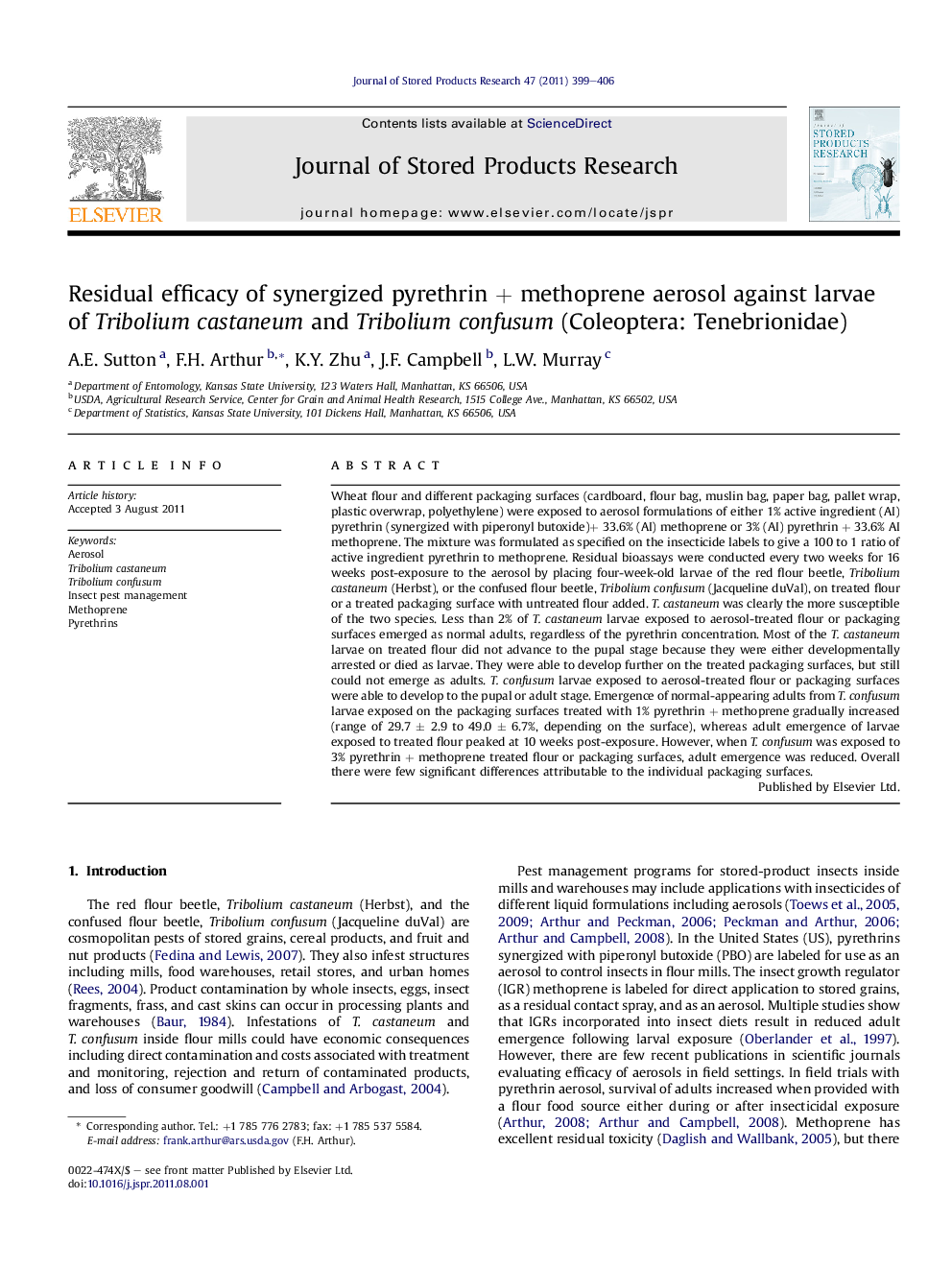| Article ID | Journal | Published Year | Pages | File Type |
|---|---|---|---|---|
| 4517240 | Journal of Stored Products Research | 2011 | 8 Pages |
Wheat flour and different packaging surfaces (cardboard, flour bag, muslin bag, paper bag, pallet wrap, plastic overwrap, polyethylene) were exposed to aerosol formulations of either 1% active ingredient (AI) pyrethrin (synergized with piperonyl butoxide)+ 33.6% (AI) methoprene or 3% (AI) pyrethrin + 33.6% AI methoprene. The mixture was formulated as specified on the insecticide labels to give a 100 to 1 ratio of active ingredient pyrethrin to methoprene. Residual bioassays were conducted every two weeks for 16 weeks post-exposure to the aerosol by placing four-week-old larvae of the red flour beetle, Tribolium castaneum (Herbst), or the confused flour beetle, Tribolium confusum (Jacqueline duVal), on treated flour or a treated packaging surface with untreated flour added. T. castaneum was clearly the more susceptible of the two species. Less than 2% of T. castaneum larvae exposed to aerosol-treated flour or packaging surfaces emerged as normal adults, regardless of the pyrethrin concentration. Most of the T. castaneum larvae on treated flour did not advance to the pupal stage because they were either developmentally arrested or died as larvae. They were able to develop further on the treated packaging surfaces, but still could not emerge as adults. T. confusum larvae exposed to aerosol-treated flour or packaging surfaces were able to develop to the pupal or adult stage. Emergence of normal-appearing adults from T. confusum larvae exposed on the packaging surfaces treated with 1% pyrethrin + methoprene gradually increased (range of 29.7 ± 2.9 to 49.0 ± 6.7%, depending on the surface), whereas adult emergence of larvae exposed to treated flour peaked at 10 weeks post-exposure. However, when T. confusum was exposed to 3% pyrethrin + methoprene treated flour or packaging surfaces, adult emergence was reduced. Overall there were few significant differences attributable to the individual packaging surfaces.
► Aerosol deposits of pyrethrin + methoprene give residual control of T. castaneum and T. confusum. ► T. castaneum is the more susceptible of the two species. ► Residual deposits are effective on different package surfaces.
